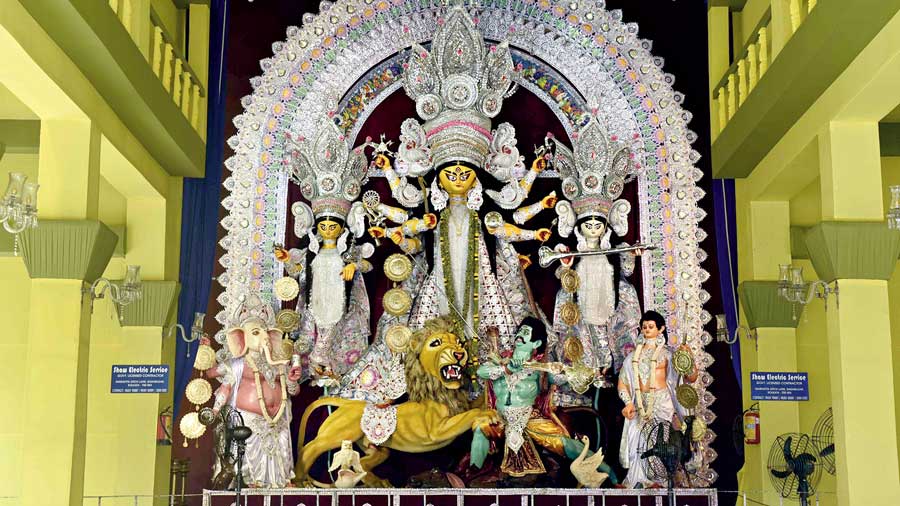I t is not easy to pin down the magic that surrounds the enjoyment of Durga Puja. An imaginative amalgamation informs the way the goddess is conceived for her annual worship — she is daughter, mother, wife as well as the irresistible force of good against evil. In the legend, Durga is empowered by a combination of gifts and weapons from various gods for her battle against Mahishasura. Her single form thus holds together an awareness of many. And it is the dynamism of many that powers her celebration every year, beginning with the public performance of religion and art produced by the collaboration of artisans, designers and traditional participants that Unesco appreciated in its intangible cultural heritage award to the event. While this lively yet seamless mingling of visions and creations achieved anew every year is an extraordinary phenomenon, the evolving of a religious event into a community festival across social and religious barriers — bringing many together — is perhaps even more important today. Representatives of the Unesco saw this as an example for the whole world.
India needs the example to work even just within the country. Numerous acts symbolise the spirit of Durga Puja — the students of a school in the Sunderbans were part of one. The children of day labourers or workers in the unorganised sector who suffered acutely during the pandemic saved whatever little money they could to spend it all on Puja gifts for those less fortunate than themselves, irrespective of religion. The pandemic had taught these young people what suffering meant and they could not bear to think of anyone going without anything new during a festival in which new clothes are traditional gifts in the family. The children made everyone their family by giving up the little they had saved. But in Gujarat, the Bajrang Dal, ideological sibling of the ruling Bharatiya Janata Party, is blocking entry to members of the minority community to Garba dance venues. The dance takes place during the build-up to Dussehra. The Bajrang Dal’s alibi for this divisive act, calculated to destroy the festive spirit, is the possibility of ‘love jihad’, a phenomenon which, the Centre has admitted, does not exist.
The Durga Pujas represent all that is against this toxicity, these attempts to inculcate hatred. The festival still reminds an increasingly troubled people what fun is — a feast for the eyes, heart and stomach, a time for new clothes, magical lights and music, of sometimes unbearable loudness and stifling crowds, of tireless police efficiency, of awareness of the world through pandals depicting edifices of which the makers have only seen pictures, through the themes and through social and environmental consciousness in presentation and practice. The thanksgiving rally for the Unesco award demonstrated the universal inclusiveness of this festival. It can keep acquiring greater cohesiveness against a divisive culture if people wish for that together. That would be a wish for the whole country.











